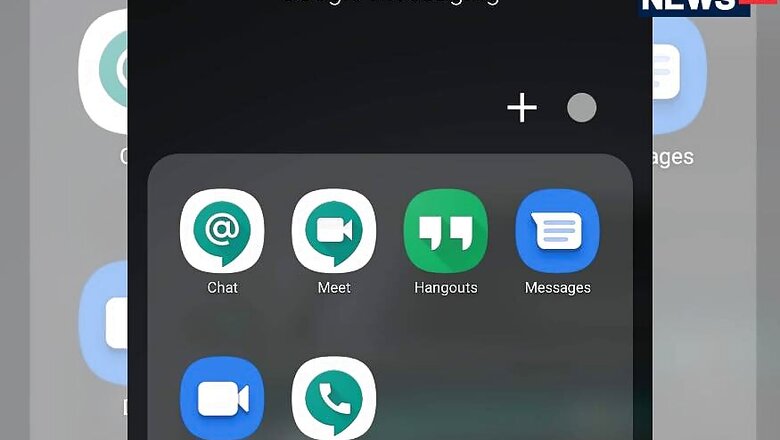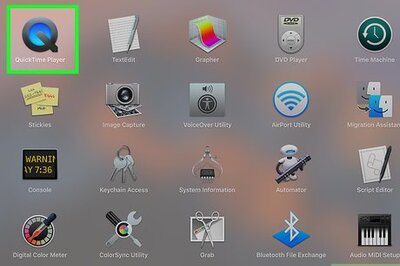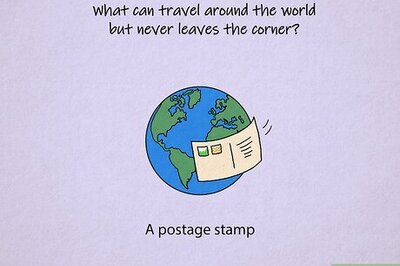
views
The instant messaging apps are more relevant than ever before. You probably are spending more time on WhatsApp, Facebook Messenger, Telegram, Signal, Skype, WeChat, Zoom, Microsoft Teams, Slack and more. Be it for work or for staying in touch with friends and family, messaging apps for text messages and video calls are the default mode of communication for millions around the world. Perhaps even more so, because of the social distancing requirements due to the COVID pandemic. Numbers seem to be suggesting that. Every messaging platform is gaining. Except one, which could have done much better to be default choice for video calls and instant messaging for millions of users around the world. But isn’t.
After some amount of confusion, Zoom clarified and said they clocked 300 million users in April. Microsoft has said that there are more than 200 million meeting participants in a single day in April, and there were more than 4.1 billion meeting minutes generated. Teams now has more than 75 million daily active users. Houseparty, an app owned by Fortnite developer Epic Games, clocked more than two million downloads in early March, as the first stages of the lockdown around the world kicked in. Facebook says video-calling on Messenger had straight doubled since last year and that 700 million users around the world are using Messenger and WhatsApp for calls—and that’s before the group calling update and Messenger Rooms rolled out.
Have You Also Read?
What is WhatsApp Aiming For? Rule The Video Meetings Space? Be a Super App? World Domination?
In early April, Google said that 2 million new users are connecting on Google Meet every day, and they're spending over 2 billion minutes together. That might be a lot of G Suite users as well, but the positioning is working among enterprises as well. That being said, a simpler and refined communication apps ecosystem might have helped Google at this time. It is all a bit confusing. From what I can count, they have six apps that do roughly the same tasks as each other. In many cases, it is pretty evident overlap. We have Google Chat, Hangouts, Google Meet, Google Duo, Google Voice and Messages. What do they do?
Google Chat, as described by Google is, “a powerful way to communicate with people in your organization.” It must be accessed via a G Suite account.
Google Meet is a more powerful tool for businesses and enterprises for video meetings, letting you share desktops, presentations and more. All premium features of Google Meet are available to everyone at this time. Which begs the question—what is Google Chat doing? I’m sure it has a purpose, but it is all very confusing. It was earlier called Hangouts Meet. In fact, Google Meet is now being integrated within Gmail, a prime location that was once occupied by Hangouts.
Then there is the consumer version called Hangouts which still retains the branding as we have known it for a long time. This is a messaging app that you can use to connect with friends, family and colleagues. You can do text messages, video calls and voice calls. Much like WhatsApp. The thing is, Hangouts is preloaded in a lot of Android phones, or you are often prompted to download it in other Android phones—which should have been its ticket for success. But that hasn’t happened.
Have You Also Read?
Good News! Google Meet’s Premium Features Are Free For Everyone as it Battles With Zoom
I am sure you would have noticed the Messages app in your Android phone. This is the default app for texting and RCS-enabled chat. It also has a desktop version, much like its siblings, and WhatsApp Web for a more recognizable reference.
One has to perhaps trace Google’s attempts all the way back to 2009. That is when Google Talk graced Gmail. It was a real-time text messaging service and Voice (in some countries) for voice chats. Then came Google Wave which tried to mash together a bit of instant messaging, forums and collaboration between colleagues—it did not work, because no one really knew what it really was for.
Have You Also Read?
Battle Royale: Which of These Indian Video Conferencing Apps Would Win Govt Challenge?
It wasn’t. in 2016, Google added three more apps to its unplanned arsenal—Allo, Duo and Spaces. Partly inspired by all the hype around Artificial Intelligence (AI) and the need to feed people suggestions for what their replies should be. In dynamic conversations which hardly follow a set pattern of formalities and language, it predictably didn’t have people thronging to use it. Duo survives till date, but Allo and Spaces walked into the sunset a while ago.
For a while, one could say Google was experimenting. But now it is becoming apparent that the company, which has got pretty much everything nailed down perfectly, still trips over when it comes to instant messaging. Is it already too late though? Would you really shift from whatever messaging apps you are using right now, at work and for personal use?



















Comments
0 comment